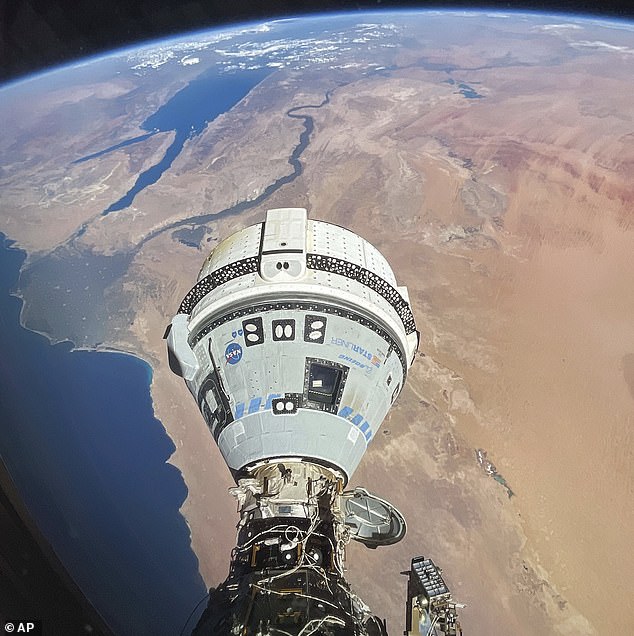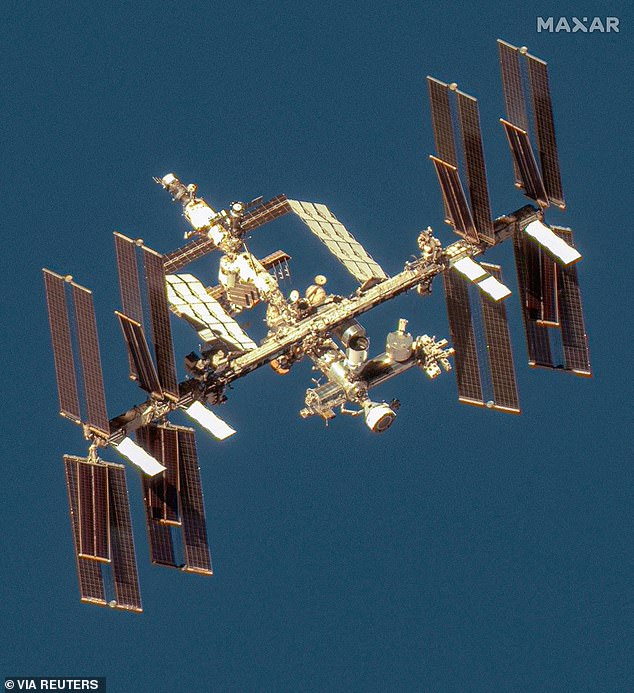Why NASA Astronauts Are ‘STRANCHED’ In Space Due To A Faulty Boeing Starliner – As Experts Reveal A Possible ‘Plan B’
The delayed return of NASA astronauts from the International Space Station due to a malfunctioning Boeing Starliner has raised concerns that the crew could be “stranded.”
While Suni Williams and Butch Wilmore’s stay was recently extended to an unspecified date, experts told DailyMail.com that the delay is for them to analyze the service module while it is still in space.
“The modular service doesn’t return to Earth, which means it can’t be recovered and there’s no way for them to analyze what the problem is,” Scott Walter, who has a doctorate in mechanical aerospace engineering, told DailyMail.com.
“The more time they have to debug it and run different tests, the better.”
Walter also noted that “nothing is off the table,” suggesting that NASA has already spoken to SpaceX about a possible rescue mission and that the Polaris Dawn private spaceflight could also be part of the agency’s Plan B next month.
While Suni Williams and Butch Wilmore’s stay was recently extended to an indefinite date, experts told DailyMail.com the delay is for them to analyze the service module while it is still in space.
The service module, located at the bottom of the capsule, contains a total of 48 thrusters and four launch abort engines.
The structure will be jettisoned when Starliner reenters the atmosphere and likely burns up, leaving NASA and Boeing without critical data on what caused the failure.
Michael Lembeck, an associate professor of aerospace engineering at the University of Illinois at Urbana-Champaign, told DailyMail.com that NASA and Boeing are just doing their homework.
“It’s too early to address the root cause of the problem,” said Lembeck, who was a consultant to Boeing’s aerospace division from 2008 to 2013.
He further explained that keeping Starliner docked with the ISS is the only way to fully study the capsule.
DailyMail.com has reached out to Boeing for comment.
“I think NASA considers all contingencies well in advance,” said Walter, chief technical advisor for Visual Components North America.
‘They have already thought through these scenarios in case one of the capsules becomes stranded or something goes wrong. They are not suddenly going to do everything they can to solve this.’
He further explained that NASA and SpaceX likely had discussions “behind the scenes” about using the Dragon capsule.
“I think there is a Polaris Dawn mission with Jared Issacman that could potentially be turned into a rescue mission,” Walter added.
“I’m sure he’d love to say go ahead.”
Issacman has funded the Polaris Dawn mission, which launches July 12 and will feature the first commercial spacewalk.
DailyMail.com asked Issacman if he would be willing to fly a rescue mission for the astronauts, but he replied: “No comment officially.”
“As far as I know, Starliner can come home just fine, but if they were to give up on that vehicle, I think realistically NASA would just send Crew 9 up with two crew members,” he said.

The service model, located at the bottom of the capsule, will be discarded when Starliner reenters the atmosphere and will likely burn up, leaving NASA and Boeing without crucial data on what caused the failed parts.

NASA delayed the return to June 14, then again to June 26, before announcing over the weekend that the date had not yet been set.
NASA postponed the return to June 14 and then again to June 26. Last weekend it was announced that the date had not yet been announced.
Starliner had a known helium leak when it launched from the Cape Canaveral Space Force Station in Florida on June 5 at 10:52 a.m. ET.
Steve Stich, manager of NASA’s Commercial Crew Program, said last month that he was confident that 27 of the 28 thrusters were working properly and had no leaks or other problems.
However, Starliner experienced five failures of its 28 maneuvering thrusters, five leaks of helium gas intended to pressurize those thrusters and a slow-moving propellant valve that indicated unresolved problems since launch.
When Starliner arrived at the space station for docking on June 6, five thruster failures prevented the spacecraft from making a close approach until Boeing could find a solution.
The software was rewritten and a number of procedures were adjusted to revive four of them and continue with the pairing.
Starliner’s undocking and return to Earth represent the spacecraft’s most complicated phases of its test mission.

Experts have suggested that NASA has already spoken to SpaceX about a possible rescue mission
Boeing spent $1.5 billion on cost overruns that went beyond the $4.5 billion NASA development contract.
NASA officials have said they want to better understand the cause of the thruster problems, valve problem and helium leaks before Starliner begins its return.
While only one thruster has died during Starliner’s current flight, Boeing experienced four thruster problems during the capsule’s unmanned return from space in 2022.
Lembeck explained that the helium in the thrusters causes the valves to open and close.
There are seals on the valve, which look like the temperature changes that occur during a space mission could warp the seal
“This is the first time a crewed vehicle has been deployed and there have been problems on every first flight,” Lembeck said.
“In Boeing’s defense, when NASA proposed Starliner, NASA didn’t provide a full budget schedule and they had to make some choices, but I’m not saying that led to these problems.”
He also predicted that Starliner will likely return with Williams and Wilmore in the first or second week of July.
Rudy Ridolfi, former Space System Commander and Space Technology Acquisition Manager, told DailyMail.com: ‘NASA will take a very conservative approach and the Boeing return plan will be submitted to Bill Nelson for final approval.
“There’s no rush at this point. If Boeing doesn’t bring the two astronauts back in the Starliner, it would almost certainly kill the program.”
Starliner has an operational life of 45 days and is scheduled to return in mid-July.
“The two astronauts are qualified test pilots, they have a lot of experience, they are veterans in space and they make the final decision whether the vehicle is safe or not – the pilot always makes the final decision,” Walter said.
“They’re probably in discussions with NASA and there’s no way the government could pressure them to back down.”
